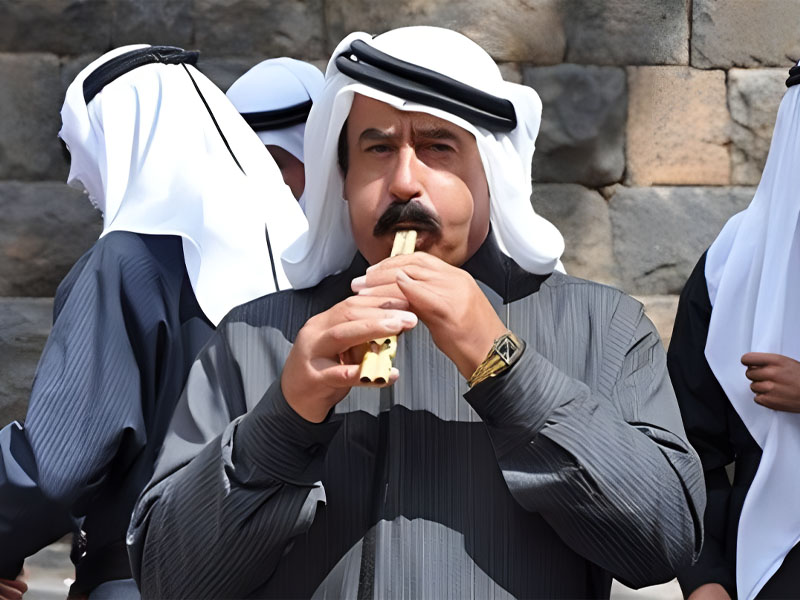Denotations of Bedouin dances and songs in the Levant
Issue 34

By Awad Saud Awad
Bedouin dances and songs are the result of the Bedouins' interaction with their harsh environment. Some songs and dances - such as Jafrah and Zarif Altul, which are performed by women of the Bani Hilal tribe - date back hundreds and possibly even thousands of years. Did the Bani Hilal women invent these dances and songs, or were they common to other Bedouin tribes?
It is difficult for any folklore researcher to determine the exact age of a dance or song because of the deep roots of our heritage, which dates back thousands of years. The Daluna love song originated in the days of the Canaanites!
The study of Bedouin songs and dances associated with occasions such as weddings is affected by the political, religious, social and economic climate. Songs for occasions such as weddings, circumcisions, the making of vows, the return of the departed, war, victory or condolences have been influenced by the changing social and political situations for thousands of years.
Bedouin art was characterised by epic songs that described nomadic life. Hajeeni is the oldest type of Bedouin song. When the Bedouin became more settled, they began singing Mawwal and Ataba. Now Bedouins sing Hajeeni while travelling and Mawwal and Ataba at the evening Majlis to express suffering, affliction, and love.
Songs such as Dabka are related to settling down rather than being nomadic, so the Bedouin looked for songs relevant to their transition to pastoral and agricultural life.
The oldest dance, Lafha is performed in the Arabian Gulf, the Arabian Peninsula, Iraq and the Levant countries. The dance may vary from country to country, but the essence is the same; women toss their long hair from side to side as they dance.



































































